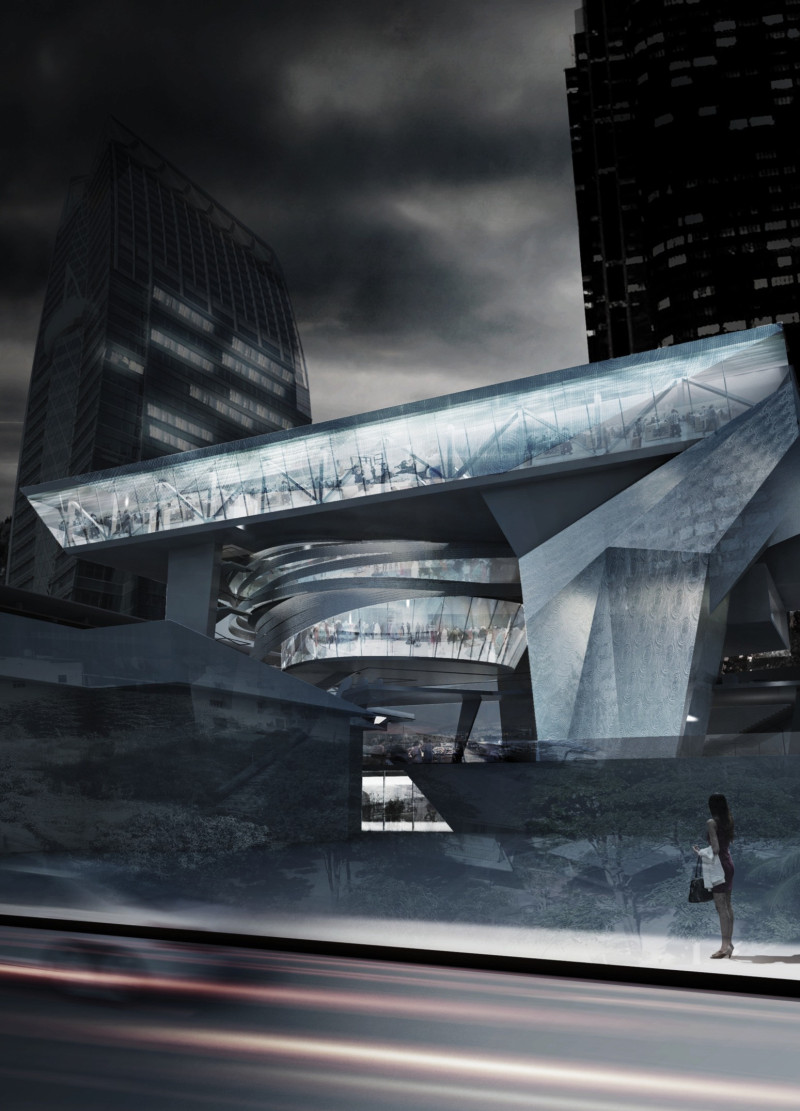5 key facts about this project
## Project Overview
Located in Bangkok, Thailand, "The Cloud" serves as a hub for fashion enthusiasts and students, designed to foster creativity and cultural exchange. The building establishes itself not only as a venue for fashion-related activities but also as a space that encourages dialogue and community events, such as fashion markets. By integrating modern architectural elements with references to local heritage, the project aims to create a distinctive environment that connects with Bangkok's urban context.
## Architectural Elements
### External Structure
The building features a contrast of angular shapes and smooth curves, with a prominent façade that mimics a cloud formation, providing shade and reflecting traditional Thai roofing concepts. The materials selected for the project include extensive glass to enhance transparency and natural lighting, concrete for structural integrity with an expressive surface treatment, and steel for its lightweight structural components. Textile elements are incorporated into the interior to resonate with the fashion theme central to the building's purpose.
### Internal Spaces
The design of the podium emphasizes multifunctionality and accessibility, functioning as a gathering point for public events such as exhibitions and markets. The roof's folding design facilitates an interplay of light and shadow, creating dynamic interior conditions. Public interaction zones, including lounges and presentation areas, support a community-centric atmosphere. Additionally, sustainable features such as passive cooling strategies and rainwater harvesting systems reflect a commitment to reducing the ecological footprint, thereby enhancing the overall environmental efficiency of the structure.

























































